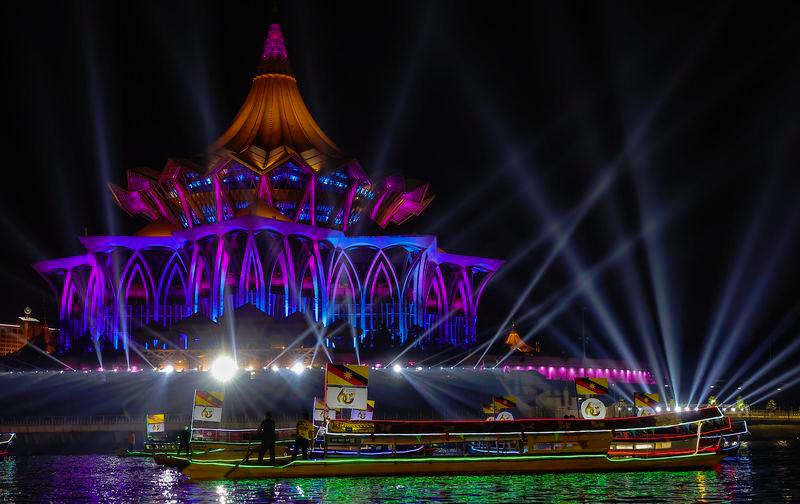KUCHING: There was a time when kerosene or gas lamps using kerosene were the ‘close companions’ of ‘perahu tambang’ (water taxis) around Kuching Waterfront, especially when transporting passengers at night.
However, today, most of Sarawak’s iconic water taxis, which have existed for centuries, are now equipped with solar panels on their roofs. This helps generate power to illuminate various decorative lights installed on the boats.
This innovation, blending traditional and modern elements, has led many operators to instal colourful LED strip lights on their boat roofs. Some have also installed lights inside the boats for passenger comfort, powered by solar panels ranging from 0.3 to 1.2 metres in size.
This transformation adds vibrant colours to the scenery along Kuching Waterfront and the Sarawak River, against the backdrop of the State Legislative Assembly Building and the Darul Hana Bridge.
For Awie Nawi, 56, who has been operating a water taxi for the past 20 years, the installation of solar lights has been incredibly convenient as he no longer needs to buy kerosene or charge dry cell batteries as he did before to power the lights.
“The state government provided all this, so there’s no more hassle. With this solar system, it charges during the day and can be used later. No more days of charging like with the old dry cell batteries,“ he said, adding that he only charges a fare of RM1 for a one-way trip from Kuching Waterfront to the bank across.
Awie also demonstrated the remote control used to turn the lights on and off, explaining that the solar power system also makes it easier for him to charge devices such as mobile phones on the boat.
Meanwhile, Saini Bujang, 65, said that although he was initially hesitant about the installation of the solar panels, he has since realised the many benefits, including cost savings of nearly 90 per cent compared to before.
“Kerosene used to be expensive and sometimes it was hard to get supplies. Now, it’s easy to use free solar energy to power the lights and electrical equipment,“ he said.
He added that using solar-powered lights is also more energy-efficient and not affected by rainy weather, unlike kerosene lamps which can be extinguished if they come into contact with water.
A tourist, Norhayati Tahir, 33, from Sibu, Sarawak, said the colourful lights installed on the boats look very beautiful at night, which encouraged her to take a ride along the Sarawak River or cross to Kampung Boyan.
Local media reported in December that 22 ferry operators in Kuching participated in the Facelift ‘Perahu Tambang’ project to refurbish their boats and ensure better safety for their passengers.
The project, funded by the Sarawak government, aims to give the water taxis a fresh appearance and attract tourists by incorporating ethnic motifs from Sarawak and installing solar-powered lights.









